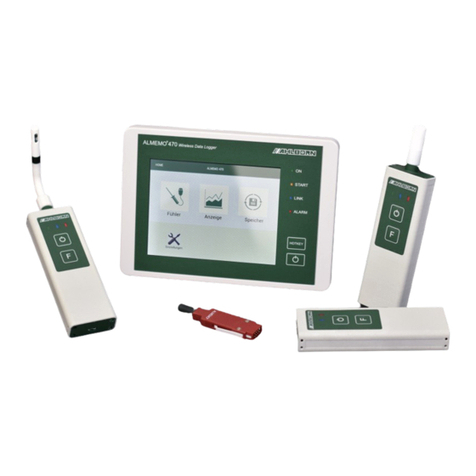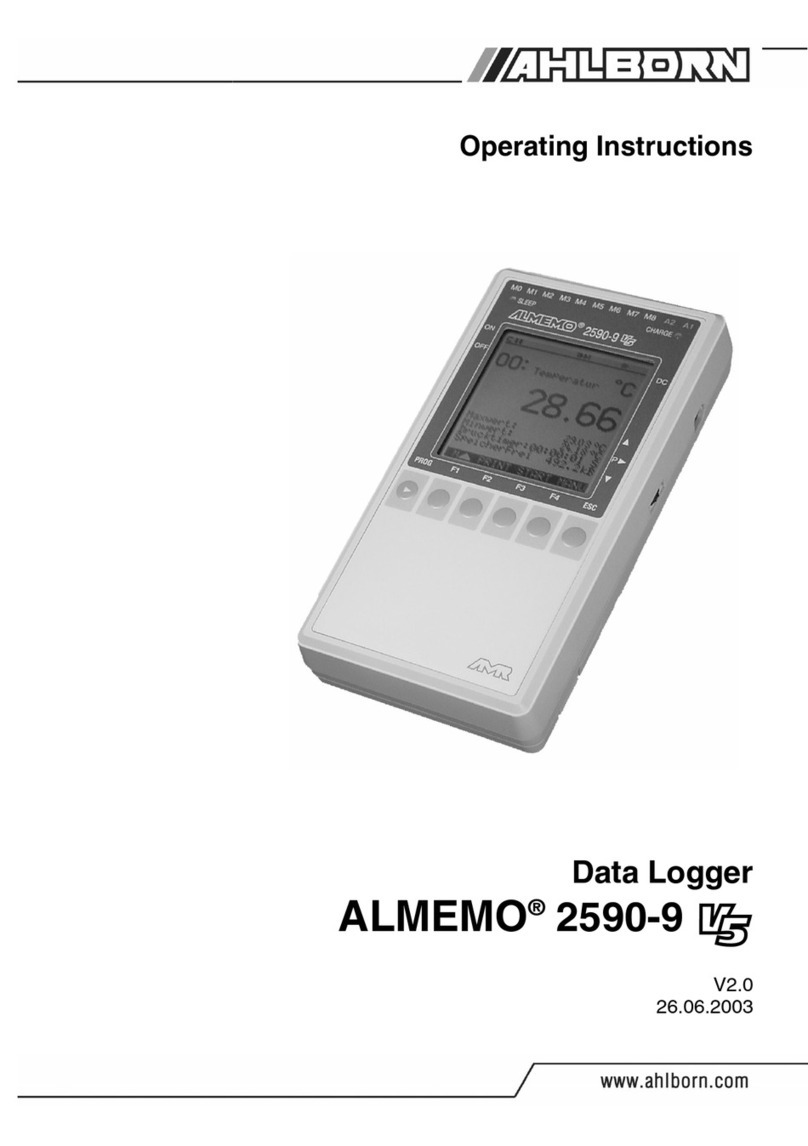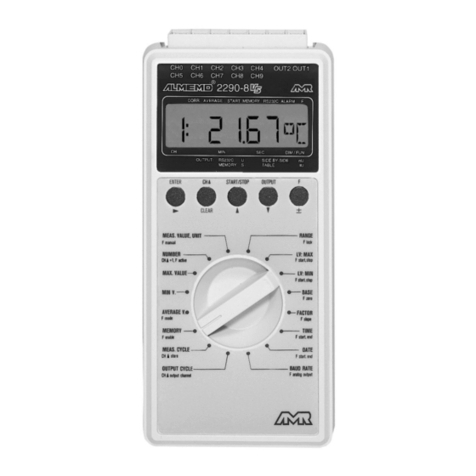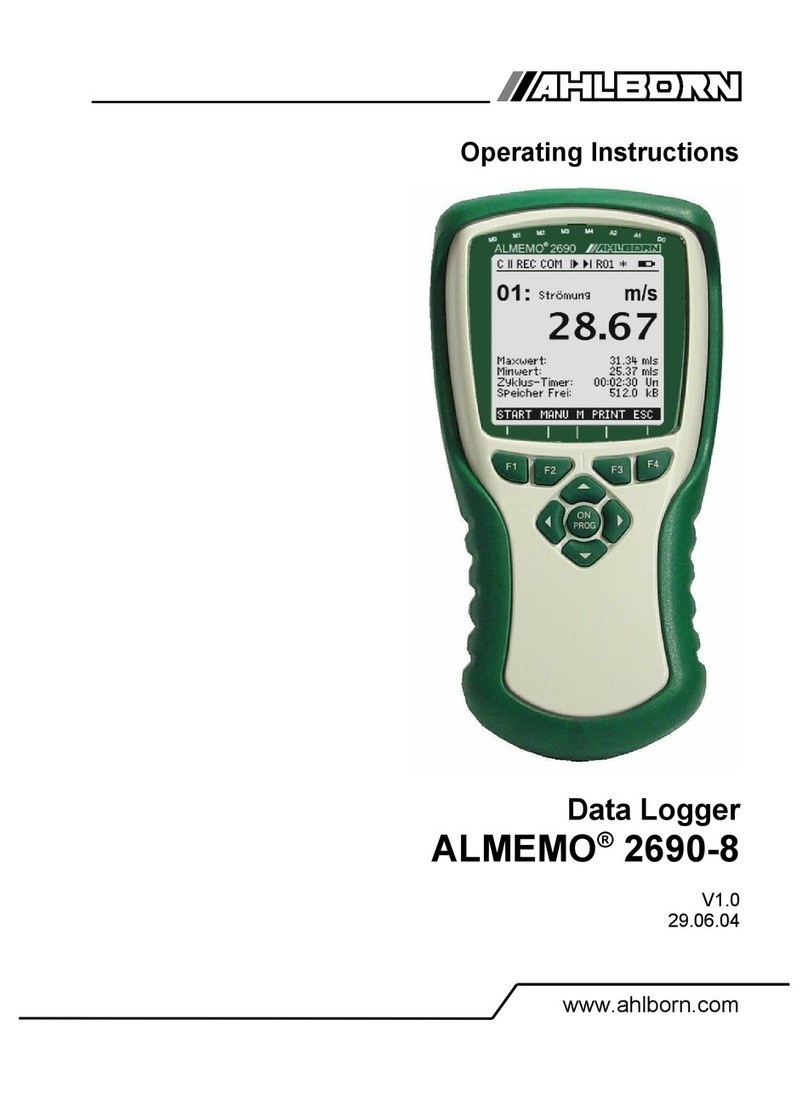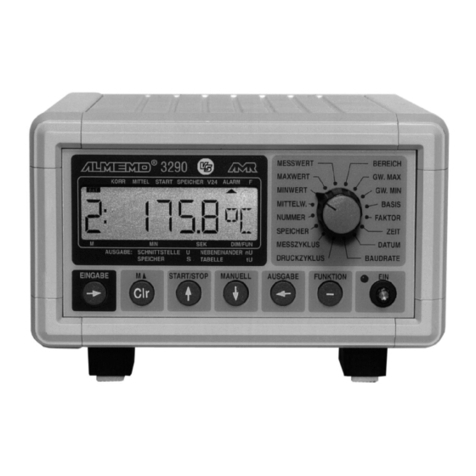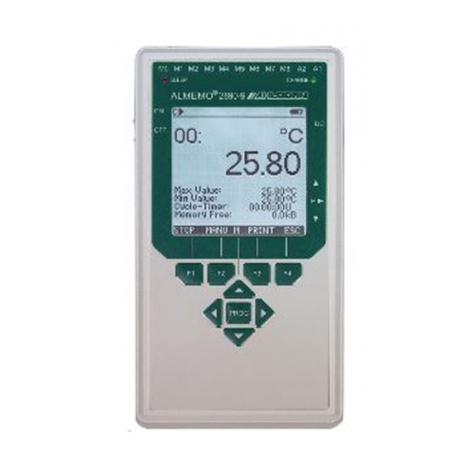2. Table of Contents
10.2.4 Two-point A justment with Setpoint Entry................................28
10.2.5 Temperature Compensation ....................................................29
10.2.6 Atmospheric Pressure Compensation......................................29
10.2.7 Col Junction Compensation....................................................30
10.3 Measuring point scans and Output...............................................31
10.3.1 Single Output / Storage of all Measuring Points.......................31
10.3.2 Cyclic Output / Storage of all Measuring Points........................31
10.3.3 Memory space, Memory Output, Clearing the Memory............32
10.3.4 Output of Menu Functions........................................................32
10.3.5 Displaying Measure Values as a Line Diagram .....................33
10.4 Averaging.........................................................................................34
10.4.1 Damping of Meas. values by a Sli ing averag. win ow............35
10.4.2 Averaging Mo e.......................................................................35
10.4.3 Averaging over Manual Single Measurements.........................35
10.4.4 Array Measurement..................................................................36
10.4.5 Averaging over the Measuring Time.........................................37
10.4.6 Measurement Time, Measuring uration, Timer.......................37
10.4.7 Averaging over the Cycle..........................................................38
10.4.8 Averaging over several Measuring Points................................39
10.4.9 Volume Flow Measurement......................................................40
10.5 Display of Several Measuring Points ............................................41
10.5.1 Menu Multi Channel Display an Bar chart...............................41
10.5.2 Differential Measurement.........................................................41
10.5.3 Menu List of Measuring Points.................................................42
10.6 Assistant-Menus for Special Meas. Operations............................43
10.6.1 Thermal Coefficient..................................................................43
10.6.2 Wet Bulb Globe Temperature...................................................43
10.7 User Menus......................................................................................44
10.7.1 Functions..................................................................................44
10.7.2 Configuration of the menus .....................................................45
10.7.3 Function Printouts....................................................................46
11. PROGRAMMING WI H PROGRAMMING-MENUS.................................47
11.1 imes and Cycles............................................................................47
11.1.1 Time an Date .........................................................................47
11.1.2 Cycle with Storage Activation an Output Format....................47
11.1.3 Conversion Rate, Continuous Measuring Point Scan...............48
11.1.4 Time an Date of Start, Time an Date of En ........................49
11.2 Data Memory....................................................................................50
11.2.1 Memory connector with SD car ...............................................50
11.2.2 Data Acquisition.......................................................................51
11.2.3 Numbering of measurements...................................................52
11.2.4 Starting an Stopping of measurements..................................52
11.2.5 Scanning mo e........................................................................52
11.2.6 Memory Output.........................................................................54
4 ALMEMO 2690-8

